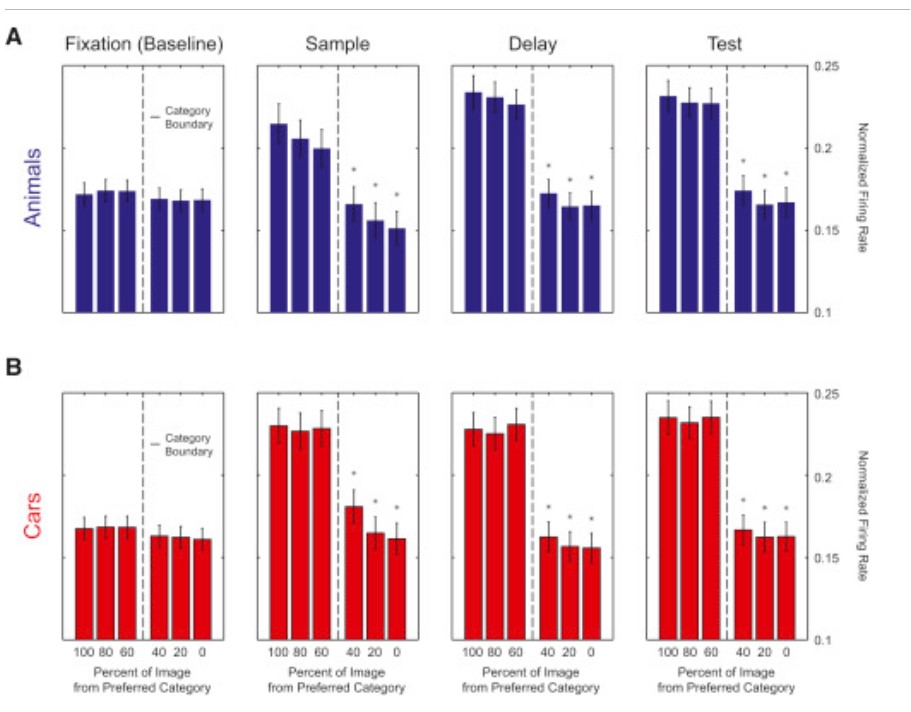
In work spanning more than two decades, Earl K. Miller’s lab has made a series of discoveries about how neurons the brain’s prefrontal cortex (PFC) enables us to represent and use abstract rules and concepts, such as categorization of different objects (e.g. cat or dog, car or truck).
In 2001 Miller made a major mark in this area with two highly influential papers. In one he and co-authors were able to identify PFC neurons that faithfully represented that categories of images that animals were taught to learn. The neurons signaled the overall categories even when the images fit the categories to varying degrees. In other words, the PFC extracted the overarching concepts needed to solve the task by filtering out the irrelevant details. In the other study Miller’s team detected PFC neurons that encoded abstract task rules—in this case whether an image matched or did not match the cue image presented earlier.

Subsequent studies, also based on recording neural activity during tasks involving abstract rules and categories, have added further richness. This included showing that PFC neurons represent how many items an animal sees. Further, many of the PFC neurons most involved in representing categorizations can encode multiple different categorization rules rather than being particular to just one specific rule. These findings are consistent with Miller’s other work showing that many PFC neurons are indeed multifunctional.
Beyond the level of individual neurons, Miller’s lab has also shown how large-scale coordinated network activity in the form of brain waves contributes to its ability to categorize in different ways. In 2018, they found that when animals needed to match images that bore close resemblance (e.g. two different varieties of apple), an increase in the power of high-frequency gamma rhythms in the ventral lateral PFC did the trick. When they had to match images based on a more abstract similarity (e.g. hammer and drill), that depended on a later surge of lower frequency beta rhythms in the dorsal lateral PFC. That same year they tracked how the brain’s representation of a pictured object is transformed from basic sensory processing to abstract categorization as it flows from one region to another.

